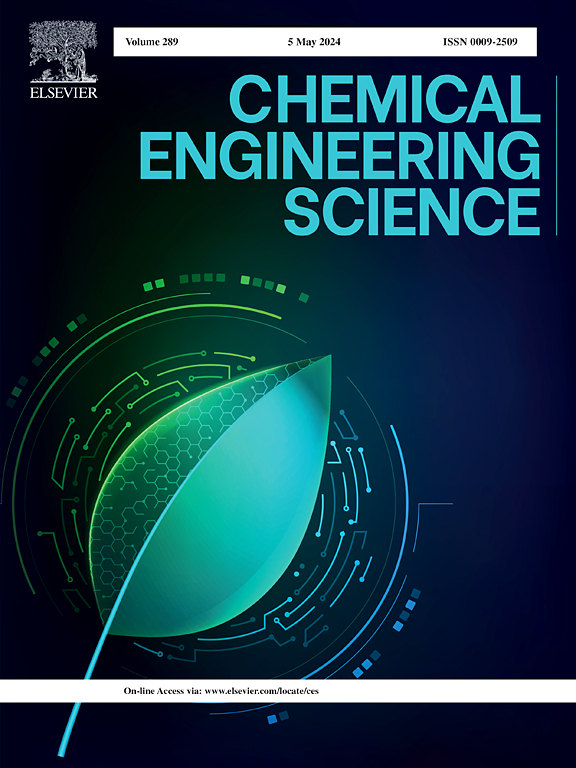含能添加剂C6N30H15Co:高氯酸铵热分解的原位物理化学强化
IF 4.1
2区 工程技术
Q2 ENGINEERING, CHEMICAL
引用次数: 0
摘要
将固体推进剂制成多孔结构,可以显著提高燃烧速度,降低能量密度。为了平衡这一矛盾,本工作开发了一种新的双机制添加剂,该添加剂由含能化合物双-(1(2)h -四唑-5-基)胺与钴原子(BTA-Co)配位组成。这种添加剂在高氯酸铵(AP)之前分解,经历剧烈膨胀,形成多孔材料,其特征是具有明确的三维结构,装载了纳米金属氧化物。该架构旨在提供双机制增强效果,包括有机框架提供的物理气体对流和金属氧化物提供的化学电子转移。采用假设演绎法,从不同大气条件下燃烧后产物的形态、组成及对AP分解的增强规律等方面验证了添加剂的增强机理。通过终止燃烧法、TG-MS和实时FTIR测试,获得了直接的物理和化学机理证据。TG-DSC结果表明,添加5 wt% BTA-Co后,AP的高温分解温度显著降低116.6 ℃,放热量提高10.34倍。添加2 wt% BTA-Co的AP-Al-HTPB固体复合推进剂的燃烧速率提高了28.87 %。该研究为新型燃烧添加剂和高燃烧速率ap基复合固体推进剂的开发提供了必要的经验数据和理论见解。本文章由计算机程序翻译,如有差异,请以英文原文为准。
Energetic additive C6N30H15Co: In situ physicochemical enhancement of the thermal decomposition of ammonium perchlorate
Making solid propellants into porous structures can significantly improve combustion speed and reduce energy density. To balance this contradiction, this work developed a novel dual mechanism additive composed of the energetic compound bis-(1(2)H-tetrazol-5-yl)-amine coordinated with a cobalt atom (BTA-Co). This additive decomposes prior to ammonium perchlorate (AP), undergoing violent swelling that results in a porous material characterized by a well-defined three-dimensional structure, loaded with nano metal oxides. This architecture aims to provides dual-mechanism enhancement effects, which include both physical gas convection provided by organic frames and chemical electron transfer provided by metal oxides. The hypothetico-deductive method was used to corroborate the additive enhancement mechanism from the morphology, composition, and enhancement laws on AP decomposition of the post-combustion products generated in different atmospheres. And direct evidence of the physical and chemical mechanisms was obtained through termination combustion method, TG-MS, and Real-time FTIR testing. The TG-DSC results demonstrated that the addition of 5 wt% BTA-Co significantly reduced the high-temperature decomposition temperature of AP by 116.6 °C and increased the heat release by 10.34-fold. Additionally, the burn rate of AP-Al-HTPB solid composite propellant with 2 wt% BTA-Co increased by 28.87 %. This study provides essential empirical data and theoretical insights for the development of new combustion additives and high-burn-rate AP-based composite solid propellants.
求助全文
通过发布文献求助,成功后即可免费获取论文全文。
去求助
来源期刊

Chemical Engineering Science
工程技术-工程:化工
CiteScore
7.50
自引率
8.50%
发文量
1025
审稿时长
50 days
期刊介绍:
Chemical engineering enables the transformation of natural resources and energy into useful products for society. It draws on and applies natural sciences, mathematics and economics, and has developed fundamental engineering science that underpins the discipline.
Chemical Engineering Science (CES) has been publishing papers on the fundamentals of chemical engineering since 1951. CES is the platform where the most significant advances in the discipline have ever since been published. Chemical Engineering Science has accompanied and sustained chemical engineering through its development into the vibrant and broad scientific discipline it is today.
 求助内容:
求助内容: 应助结果提醒方式:
应助结果提醒方式:


